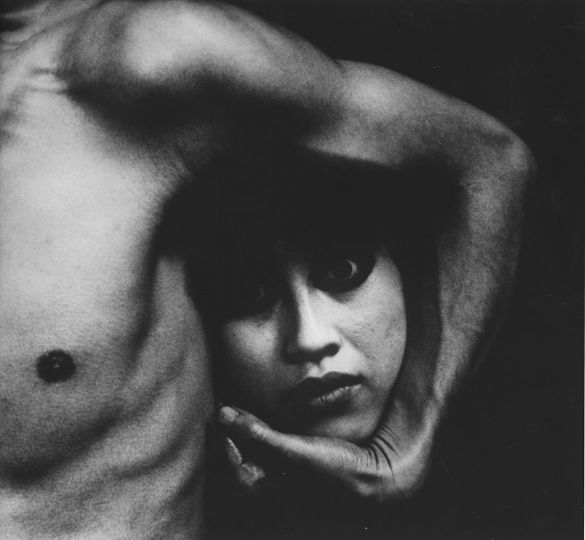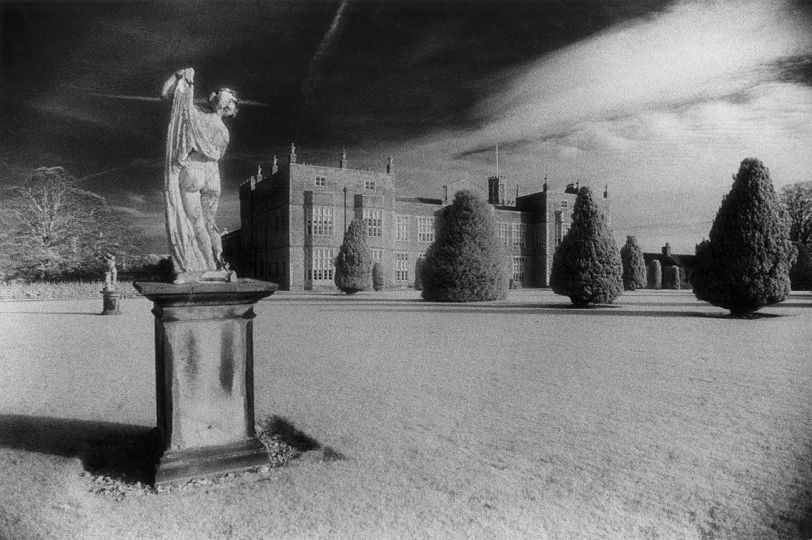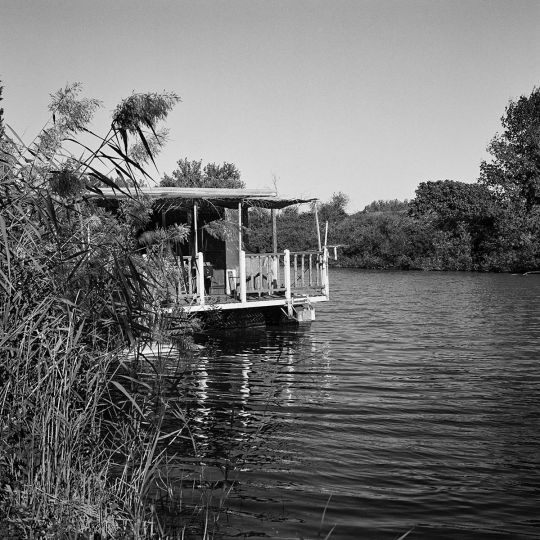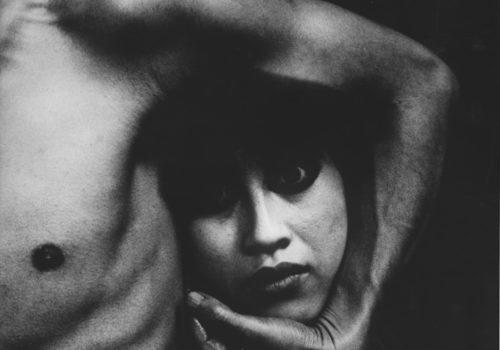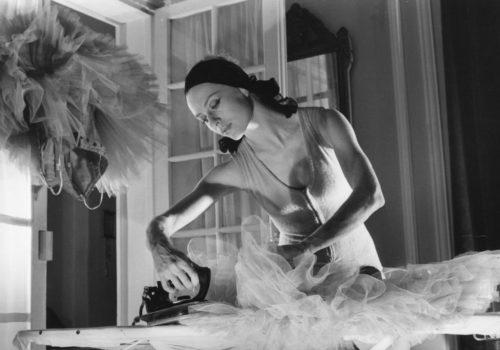Chapter 1
One wants to write about their recent week in Paris with some sensitivity. The original brief for me here was to write anything for “L’Oeil”. I distractedly imagined that would be a flaneur’s diary of what I’d seen photographically.
It changed in a flash.
I’ll jump to the end of this and say that the picture in The New York Times by Jerome Delay of the single draped body in a otherworldly golden light, on the sidewalk in the scattered leaves and security grate graffiti sorted me out quickly. Great images for me find their strength not in what they say literally but rather what they suggest. Terror and humanity and grace are here (in a single frame – cut). There is tragedy and, in the solitariness of the figure, a sense of resolve, the necessity of going on, with whatever that bodes (more bombings and shooting, revenge and recriminations, sadness in the West, celebration in the Middle East). Much of that is distilled in the single frame.
Events like this seem impossible. 11/13/15.
It had been a beautiful week in Paris, achingly sunny and warm, barely a jacket needed. For an American, in retrospect, the skies were like this in New York in 09/11/2001.
My thinking in this piece had been to offer an old quote of mine that “collecting photographs is like running around in the thunderstorm praying that you will be hit by lightning”. Clever but right. You want that out of body epiphany. Otherwise why bother?
My sad report is that the news picture above is the bolt of lightning that hit me.
This was the week of Paris Photo, its 19th edition, at the Grand Palais, the highpoint of the year for the photo community. Ironically the hardest things to take in at this fair are the photographs . There is so much to see, from so many different places. Everyone may have a system for trying to sort through the enormity, but this is always thwarted because the week is overwhelmingly about people: old and new friends, colleagues, clients, talent and prospects for the future: commissions, rendezvous.
I had done my overview – looking, looking, looking but very little seeing, making the date with myself to return, to process it all. It didn’t happen.
Saturday and Sunday were unreal. As you sorted out the immediacy and the impossibility of the terrorist actions, and pieced together the information that people you loved were out of harms way – imagine Facebook assuring friends and family in great sweep of checking in to say “I’m ok, I’m safe” – then you found some friends and walked and drank even more coffee, not really connected to anything. It was like walking through a movie with the sound turned off.
At Charles De Gaulle waiting to board on Monday AM, I was with Frish Brandt from the Fraenkel Gallery in San Francisco. It was simple: long time friends sitting together, affected by the news, anxious, tired from getting up early, not sad necessarily but emotionally comforting each other in that way friends do.
Vive La France! Vive mes amis de la photographie!
Chapter 2
I do have some reports on photography in Paris and as indicated I have reservations or at least, mixed feelings about the timing of this. There is a lot to be said about resiliency and rebounding, so if this is too soon, come back later.
At the fair itself, I am always struck by the necessity of visiting Philippe Jacquier’s Gallerie Lumieres Des Roses. I love that all the PP veterans must come by this stand to really look at photography where authorship is not primary. It is all about the photograph itself. There was a good 19th C. Pierrot portrait ( Anonyme, Le mime Debureau – série Têtes d’expression par Adrien Tournachon) but my favorite was carbon print of a chorus line-like arrangement of codfish with tiny boys or men, (“Morues geantes, Ecosse 1908”). There is a statement of purpose that the gallery explores “the immense and fertile field of anonymous photography to single out images that the eye – regardless of the signature – will identify as holding an intrinsic value, freedom, a force of evocation or any other reason for which there will not necessarily be a word” is perfect. Freedom, indeed.
Here are responses to events separate from Paris Photo itself.
David Campany’s “A Handful of Dust: from the Cosmic to the Domestic” at Le Bal is a spectacular success and too good not to weigh in on now. Le Bal itself has evolved into a singularly great showcase for photography; its programming is thoughtful and unpredictable, and the physical space is just right.
The thesis for the show is to take the classic Duchamp – Man Ray collaboration, variously titled “Élevage de poussière (Dust Breeding)”,and “Voici le domaine de Rrose Sélavy […] Vue prise en aéroplane par Man Ray – 1921 (Here is the domain of Rrose Sélavy […] View taken from an aeroplane by Man Ray – 1921)” as the starting point for considering the conceptual in photography. Why not? The insightful thing that Campany does with his Dust show is to look at and to present photography in its many iterations, not simply the great print, but also the poster, the book, the magazine, newspaper or poster reproduction. He insists on a history of photography that is inclusive. He has gathered a remarkable series of dust storm postcards from Midwest in the 1930’s, two (from – cut) gravures by Laure Albin Guillot and played these off three striking grids of more contemporary works from John Divola, Sophie Ristelhueber, and Xavier Ribas and an odd flat work by Gerhard Richter in a vitrine. Even the wall text is an almost subllminal black on dark gray. Smart and subtle.
Campany uses a thoughtful quote from the late German writer, W. G. Sebald
“A photograph is like something lying on the floor and accumulating dust, you know, where these clumps of dust get caught, and it steadily becomes a bigger ball. Eventually, you can pull out strings. That’s roughly how it is.”
The accompanying book stands on its own too. Well done.
At the other end of the spectrum was the two-part show “Qui a peur des femmes photographes? or Who’s Afraid of Women Photographers?’ 1839-1919 – Musée de l’Orangerie and 1918-1945 – Musée d’Orsay, collaborations with the Stadtmuseum, Munich and the Library of Congress in Washington D.C.
The show represents a major disappointment and disservice to the public. There are some discoveries in the mess here – artists and stories. You want to see even more Gertrude Käsebier, Madame Yevonde, Frances Benjamin Johnston, Elisabeth Hasse and the adventurers working for the National Geographic Society and photojournalists from WWI. There is so much talent here but names are flung at you. A show like this presents a huge learning curve for the audience, but the wall text is doggerel (better at the Orsay), the installation is squatty (dark dull walls with frames that rarely showcase the works sympathetically, which have been hung artlessly), and thematic groupings that chop up the histories.. It is maddening to think that it is unlikely that someone else can take on a history like this in the next ten years. Not well done.
I love photography when it shakes me and demands a response to the artist’s “Did you ever think about it this way?” Engage me, let me dance with the pictures, make me see. The curator must be as much an artist as the talent they are showcasing.
Chapter 3
The exhibition of highlights from Artur Walter’s collection at Maison Rouge deserves its own entry here.
First off MR is the home of Fondation Antoine de Galbert with M. Galbert offering a platform for astonishing collectors over the past many years. The exhibitions here are consistently obsessive and thrilling, and especially engaging for this long time collector.
Mr. Walter has concentrated much of his attention on the photography of Africa and Asia, contemporary and vintage. The collection is known from a big exhibition in Arles in 2014 and a changing program in its Project Space in Chelsea in New York, and his museum campus in Neu-Ulm, Germany. As collectors go, he is a very big deal and a natural for Maison Rouge.
The Paris show has been organized by curator Simon Njami and it is divided into “fragments of the collection”; le garden, la ville, l’identite, etc. all of which is highlighted by M. Walters’ fascination with serial imagery.
On view there are Richard Avedon’s “The Family”, 1976; Kurt Blossfelt’s “Urformen der Kunst”, 1928 and an installation/wallpaper reconsideration of Alphonse Bertillon I.D./mug shots c, 1885. Like that.
The usually uncomfortable basement space showcases Yang Fudong “East of Que Village”, 2007, a six channel video about rural Chinese and wild dogs (Joseph Beuys in the snow). It is mesmerizing.
(Walters is a generous collector making the collection so accessible – cut and move to next page). Also you stumble on brilliant marriages of works in a show like this: Ed Ruscha’s classic photo book “Every Building on The Sunset Strip”, 1966 coupled with a Japanese Yoshikazu Suzuki and Shohachi Kimura’s “Ginza Kaiwai/Ginza Haccho”, 1954 , an eerie doppelgänger to the Ruscha piece, with precisely the same composition but a decade younger. Then there is an Anonymous series, “Photographs of Businesses along Sixth Avenue, New York”, 1936-37 with the three groups playing together brilliantly.
The whole exhibition is lush. Walters is a generous collector making the collection so accessible, bringing substantial resources and imagination together with great results. Well done.
There were two other events to mention. Visitors to Paris Photo are pulled in many, many directions for receptions and dinners and meetings. There was a special event hosted by Blurb, the pioneering self-publishing enterprise. They have produced “The Lost Rolls of Ron Haviv” with inspired launch parties in New York and in Paris.
From my essay for the book and magazine;
“What is this curious ‘Twilight Zone’, Mr. Haviv, our photographer, has
ventured into? Are these like journals stored carelessly? Then looked at
again one day, finding them incomplete, damaged, and out of sequence
and offering up a discombobulated history and a skewed look back?
“Haviv is not disorganized. He is systematic. These are films he never
intended to have processed. The jobs had been shot and delivered, the film
had been x-rayed and damaged, or it was personal work he might look at
later when he had the time and money to develop the rolls. There was
nothing more to do with the material than to put it aside for another day.
That time came thanks to the encouragement of photographer Dan Milnor
and Blurb. Haviv has returned to evidence of another time—the era of
analog film. There were surprises and gaps with the photographer
reimagining the past.
“Haviv is a distinctive character. He looks alert. His eyes light up. He trades on his smarts and sometimes by his own admission, dumb luck. He
is bright and articulate. He bears witness. He bears witness. Ron says he appreciates, ‘The responsibility and the privilege of being able to tell people’s stories—the idea of helping to affect change.’ ”
If self-publishing is part of the future of photography or more accurately its present, we must also look to the talent. FOAM (the Amsterdam-based magazine and institution) has a bold and appealing installation at Atelier Néerlandais. None of the names register, and it is a very Euro/US centric selection, but these are the photographers we will be seeing at Paris Photo at the 20th edition (!) in 2016.
Bonne chance.
INFORMATIONS
Paris Photo
www.parisphoto.com


